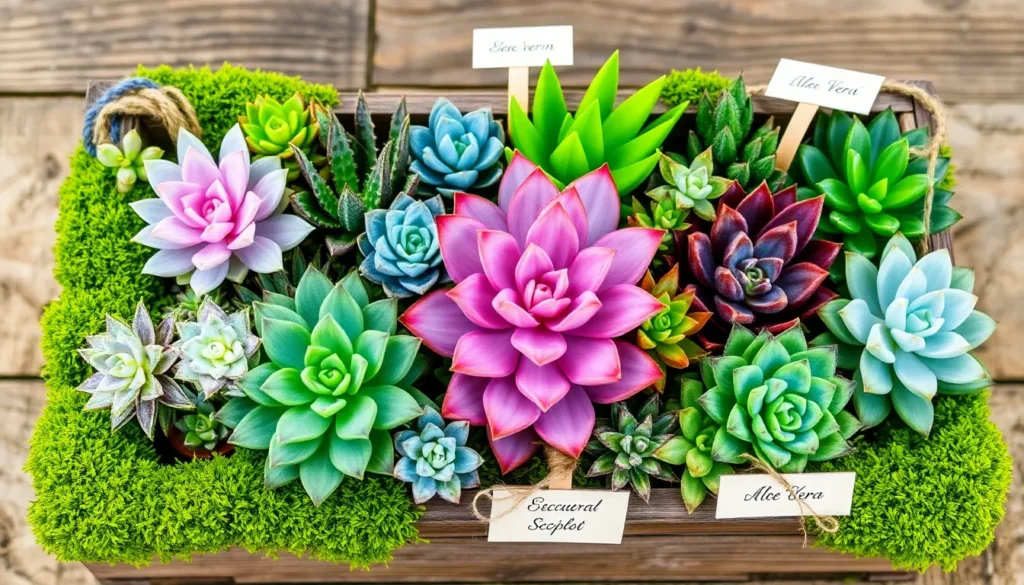Imagine transforming your home into a lush oasis with a medley of stunning succulents that captivate the eye and soothe the soul. Whether you’re just starting your gardening journey or have a seasoned green thumb, “12 Beautiful Succulent Varieties to Grow at Home” is your treasure map to cultivating a vibrant indoor or outdoor garden. This guide isn’t just about aesthetics; it’s about discovering the joy and satisfaction that comes from nurturing these resilient plants.
In this carefully curated list, you’ll find succulents that offer more than just beauty—they’re champions of low-maintenance living. You’ll gain practical insights into choosing, caring for, and styling these hardy plants, ensuring your confidence in their growth and your gardening prowess. By diving into this guide, you’re on the path to experiencing the unique rewards of gardening: the thrill of watching your plants thrive and the serene satisfaction that comes with it.
Discovering Unique Succulent Types
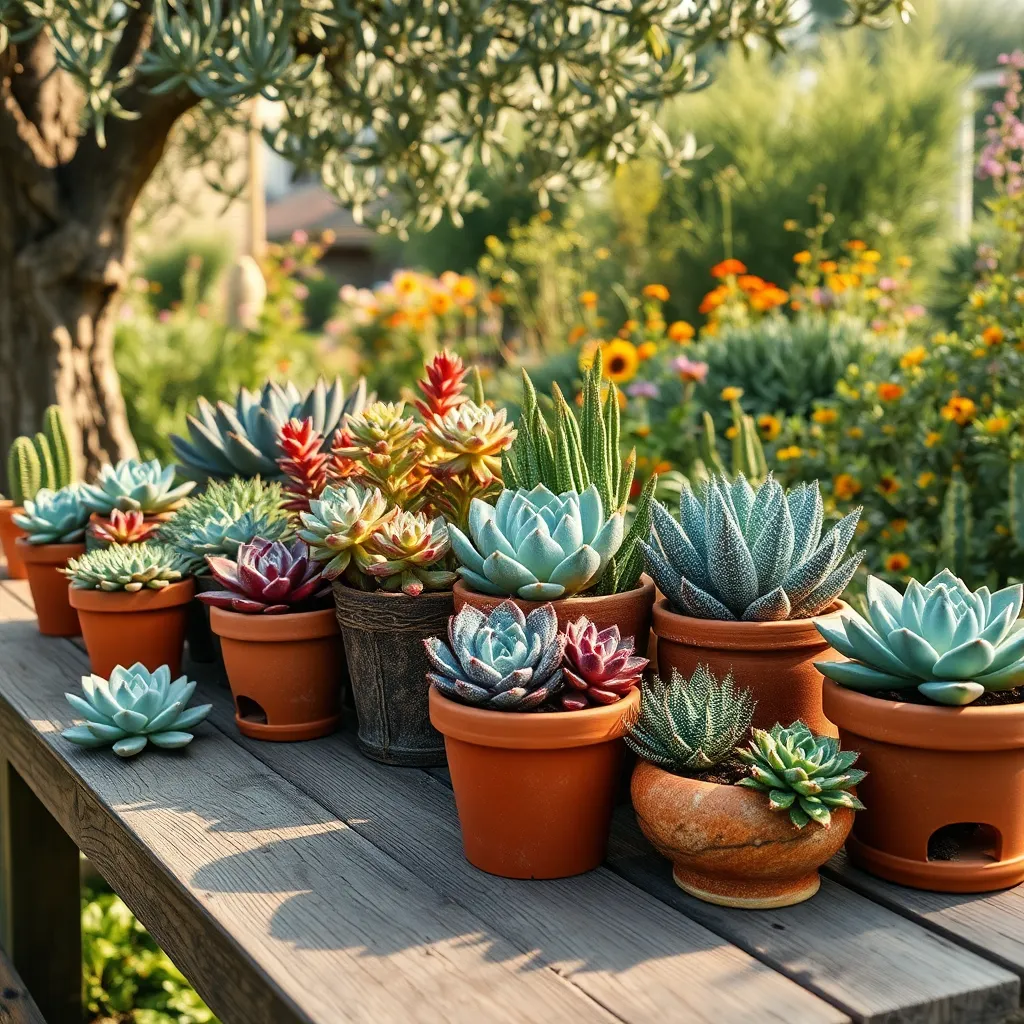
One of the most intriguing succulents to consider is the Panda Plant (Kalanchoe tomentosa), known for its fuzzy, silver-green leaves with brownish-red tips. To thrive, it requires bright, indirect sunlight and well-draining soil, such as a cactus mix blended with perlite for added aeration.
Another fascinating option is the String of Pearls (Senecio rowleyanus), which offers a unique cascading effect perfect for hanging baskets. It’s essential to water these sparingly, allowing the soil to dry out completely between waterings to prevent root rot.
For those looking to add color, the Rainbow Hedgehog Cactus (Echinocereus rigidissimus rubrispinus) stands out with its vibrant pink blooms. This cactus thrives in full sun and requires a gritty soil mix, ideally composed of sand, gravel, and a small amount of organic matter to mimic its natural desert habitat.
Lastly, the Haworthia cooperi offers an intriguing translucent quality in its leaves, giving it a distinct appearance. It prefers bright but indirect light and should be watered moderately, ensuring the soil is allowed to dry out between watering sessions to maintain its health.
Aloe Vera: Healing and Hardy

Aloe Vera, renowned for its healing properties, is also one of the hardiest succulents you can grow at home. This versatile plant thrives in a range of conditions, making it perfect for both novice and experienced gardeners.
Begin by planting your Aloe Vera in a well-draining cactus mix or create your own by mixing equal parts of sand and potting soil. Ensure the pot has drainage holes to prevent water from stagnating, which can lead to root rot.
Position your Aloe Vera in a location with bright, indirect sunlight. Too much direct sunlight can scorch its leaves, while too little will cause it to become leggy.
Water the plant sparingly, allowing the soil to dry out completely between waterings. Typically, watering every two to three weeks is sufficient, but adjust according to your climate and season.
For the more advanced gardener, propagating Aloe Vera by removing and planting the offsets, or “pups,” is both easy and rewarding. Gently remove the pups from the base of the plant and let them dry for a day before planting them in a separate pot.
Echeveria: Rosette-Shaped Charmers
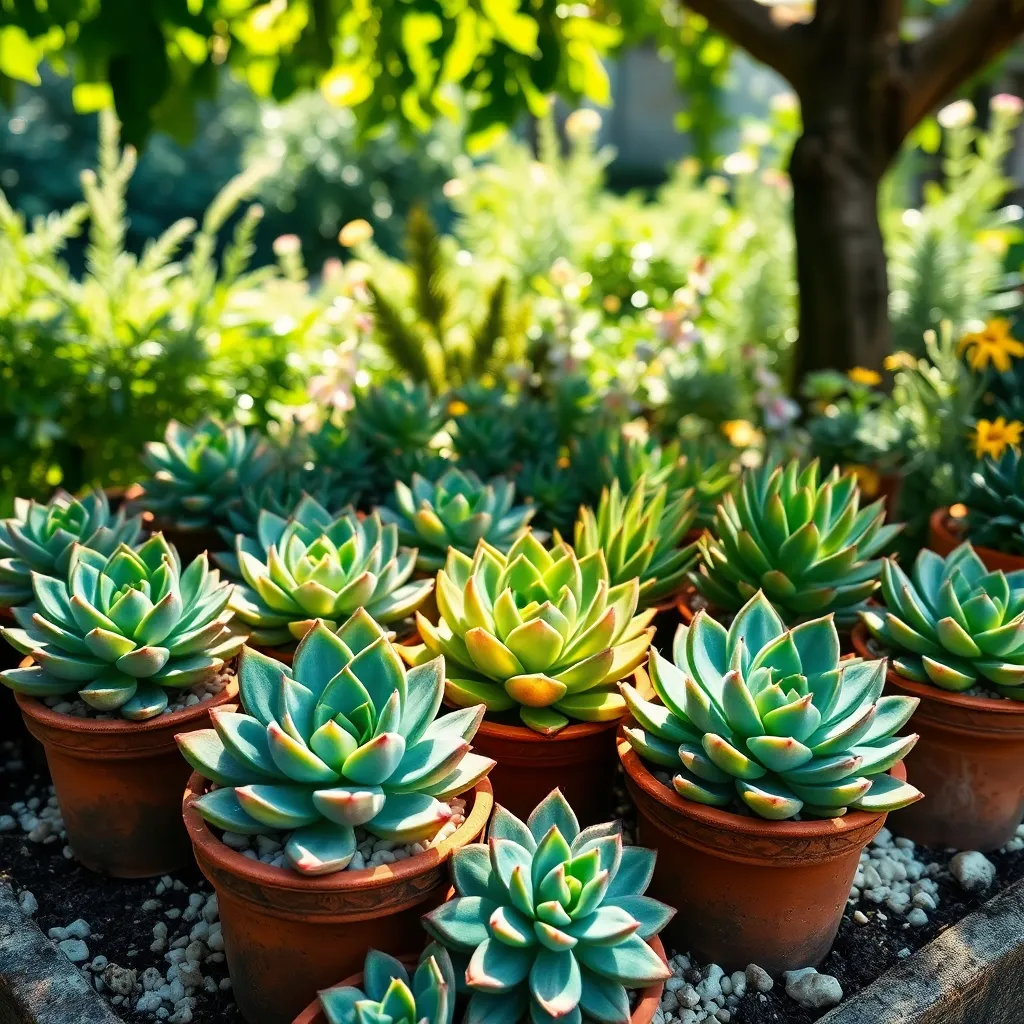
Echeverias, with their exquisite rosette shapes and vibrant colors, are a delightful addition to any succulent collection. These charming succulents thrive in bright, indirect sunlight, making them perfect for a sunny windowsill or a well-lit indoor garden.
To keep your Echeverias healthy and vibrant, it’s crucial to plant them in well-draining soil. A mix specifically designed for succulents or a combination of potting soil, sand, and perlite will provide the perfect environment for their roots.
Watering Echeverias requires a careful balance; allow the soil to dry out completely between waterings. Overwatering is a common mistake, so ensure your pots have drainage holes to prevent water from sitting at the roots.
For those looking to propagate Echeverias, leaf cuttings offer a simple method to expand your collection. Gently twist off a leaf, let it dry for a few days to callus, and then place it on top of the soil, misting lightly until roots develop.
Sedum: Versatile Ground Covers
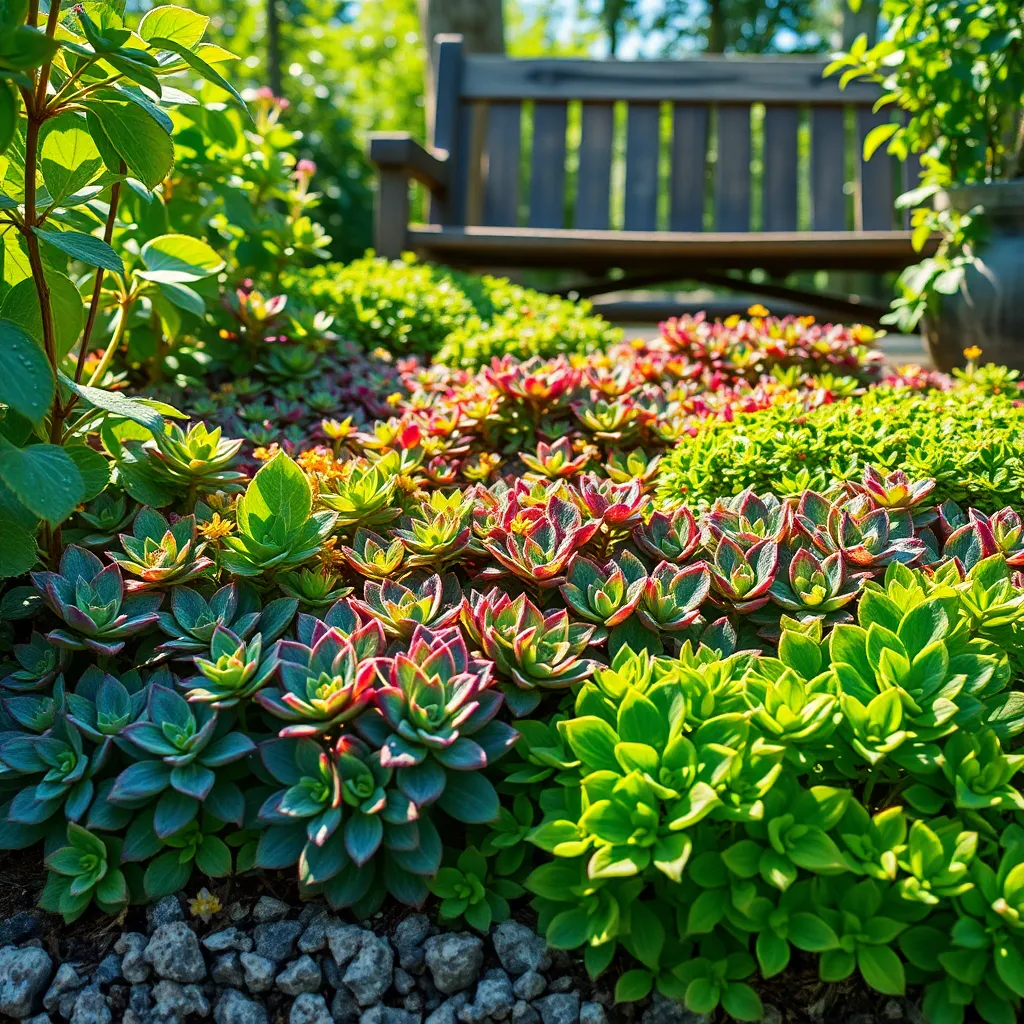
Sedum, commonly known as stonecrop, offers a versatile solution for ground cover in gardens. These hardy succulents thrive in a variety of conditions, making them an excellent choice for gardeners of all levels.
To get started with sedum, choose a sunny spot where they can soak up at least six hours of sunlight daily. Well-draining soil is crucial for their success; consider mixing sand or grit into your garden soil to improve drainage.
Watering sedum requires a careful balance; they prefer dry conditions and will suffer if overwatered. Aim to water them deeply but infrequently, waiting until the soil is completely dry before the next watering session.
Advanced gardeners can experiment with different sedum varieties to create a colorful tapestry in their garden. Consider planting low-growing types like Sedum spurium or Sedum acre to fill in gaps between stones or along pathways.
Haworthia: Low-Light Beauties
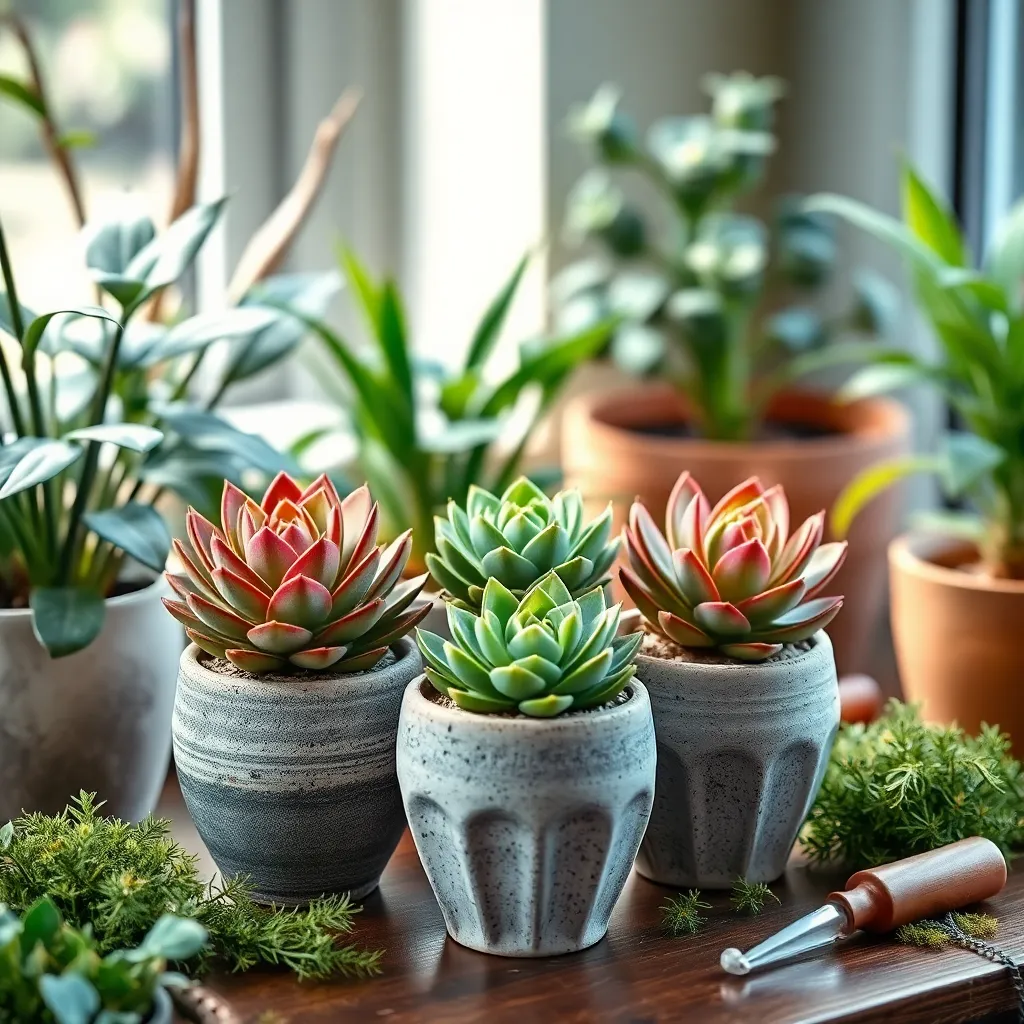
Haworthia are a delightful choice for gardeners looking to add some charm to low-light areas in their home. These succulents thrive in environments where they receive indirect sunlight, making them perfect for indoor settings that don’t get intense light.
For optimal growth, plant your Haworthia in a pot with well-draining soil, such as a cactus mix or a blend of sand and perlite. Avoid overwatering, allowing the soil to dry out completely between waterings, which typically means watering once every two to three weeks.
Beginner gardeners will appreciate the low-maintenance nature of Haworthia, as these plants are remarkably resilient and forgiving. Meanwhile, those with more experience can experiment with different Haworthia varieties, like Haworthia fasciata or Haworthia attenuata, to create an interesting collection.
Incorporate a balanced, diluted liquid fertilizer into your care routine during the growing season, which is spring and summer. This will encourage healthy growth and may even lead to the production of small, tubular flowers that add an extra touch of beauty.
Jade Plant: Prosperity Symbol
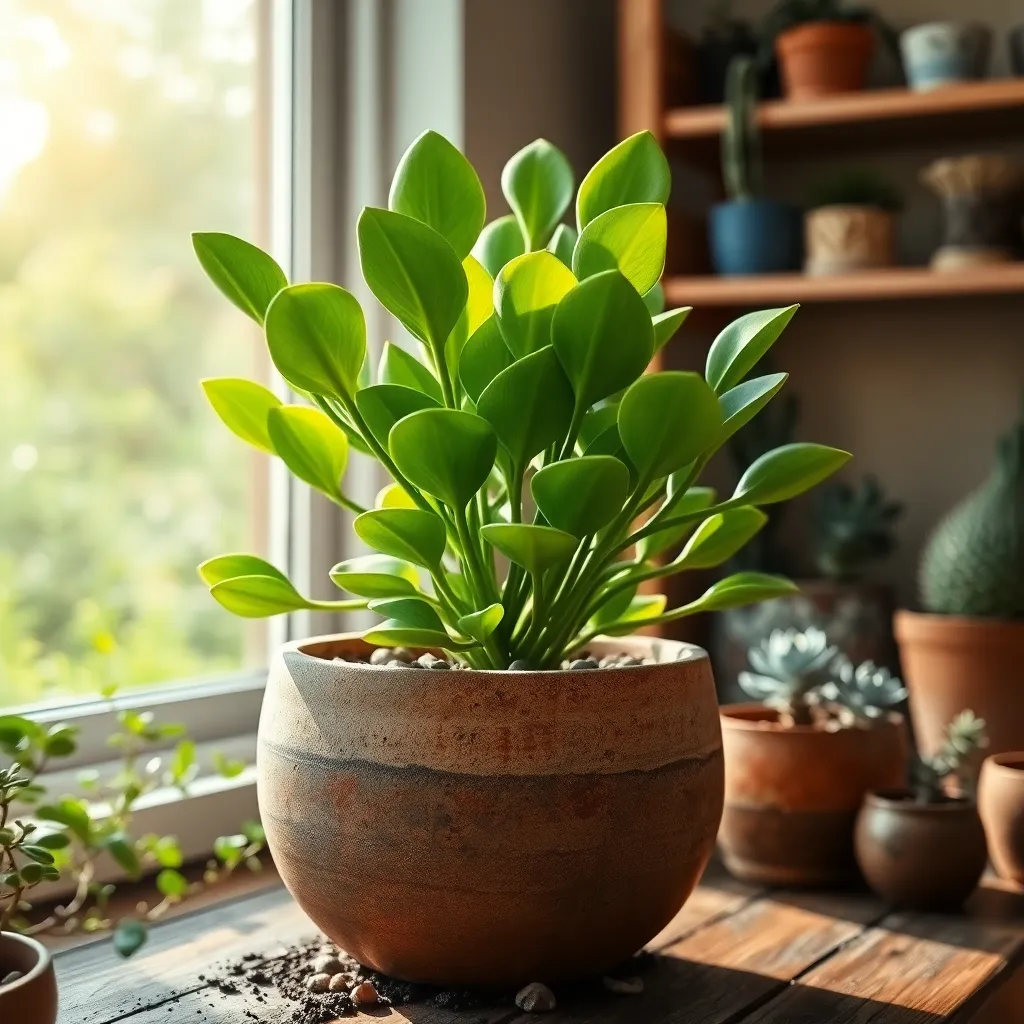
The jade plant, also known as Crassula ovata, is a popular choice for both novice and seasoned gardeners due to its easy care and symbolic representation of prosperity. This hardy succulent can thrive indoors with minimal effort, making it a perfect addition to home or office spaces.
To ensure your jade plant flourishes, place it in a location where it can receive bright, indirect sunlight for at least four to six hours a day. However, avoid direct, harsh sunlight which can scorch its leaves, especially during the hottest parts of the day.
When it comes to watering, allow the soil to dry out completely between waterings to prevent root rot—typically, this means watering every two to three weeks. Using a well-draining soil mix, such as a cactus or succulent mix, will help maintain the right moisture levels and promote healthy root development.
For more experienced gardeners, consider propagating jade plants using leaf or stem cuttings. Simply allow the cuttings to dry for a couple of days to form a callus before planting them in a suitable potting mix, and soon you’ll have new plants to share or expand your collection.
String of Pearls: Cascading Elegance
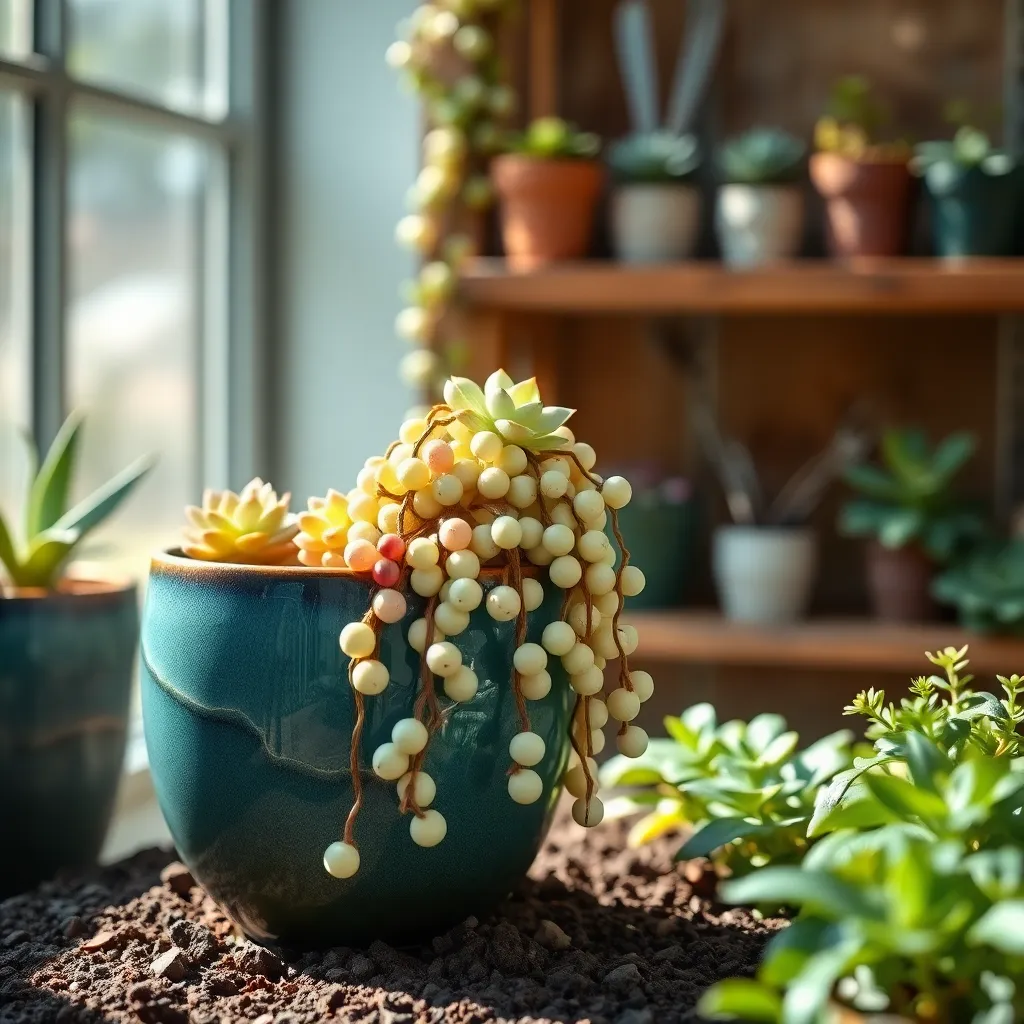
The String of Pearls plant, with its unique spherical leaves, brings a touch of elegance to any indoor garden. Known for its cascading growth habit, this succulent is perfect for hanging baskets or as a trailing plant on shelves.
To keep your String of Pearls thriving, place it in a spot with bright, indirect light. Direct sunlight can scorch the delicate leaves, so ensure to protect it from harsh rays, especially in the afternoon.
Soil is crucial for this plant; opt for a well-draining cactus or succulent mix to prevent root rot. You can enhance drainage by adding extra perlite or coarse sand to the soil mix.
Watering should be infrequent; allow the soil to dry out completely between waterings. During the winter months, reduce watering even further as the plant enters a dormant period.
For those looking to propagate, simply take cuttings from the stems and allow them to dry for a day or two before placing them in soil. Patience is key as roots will establish over a few weeks; mist the soil lightly to encourage growth without overwatering.
Agave: Striking Desert Dwellers
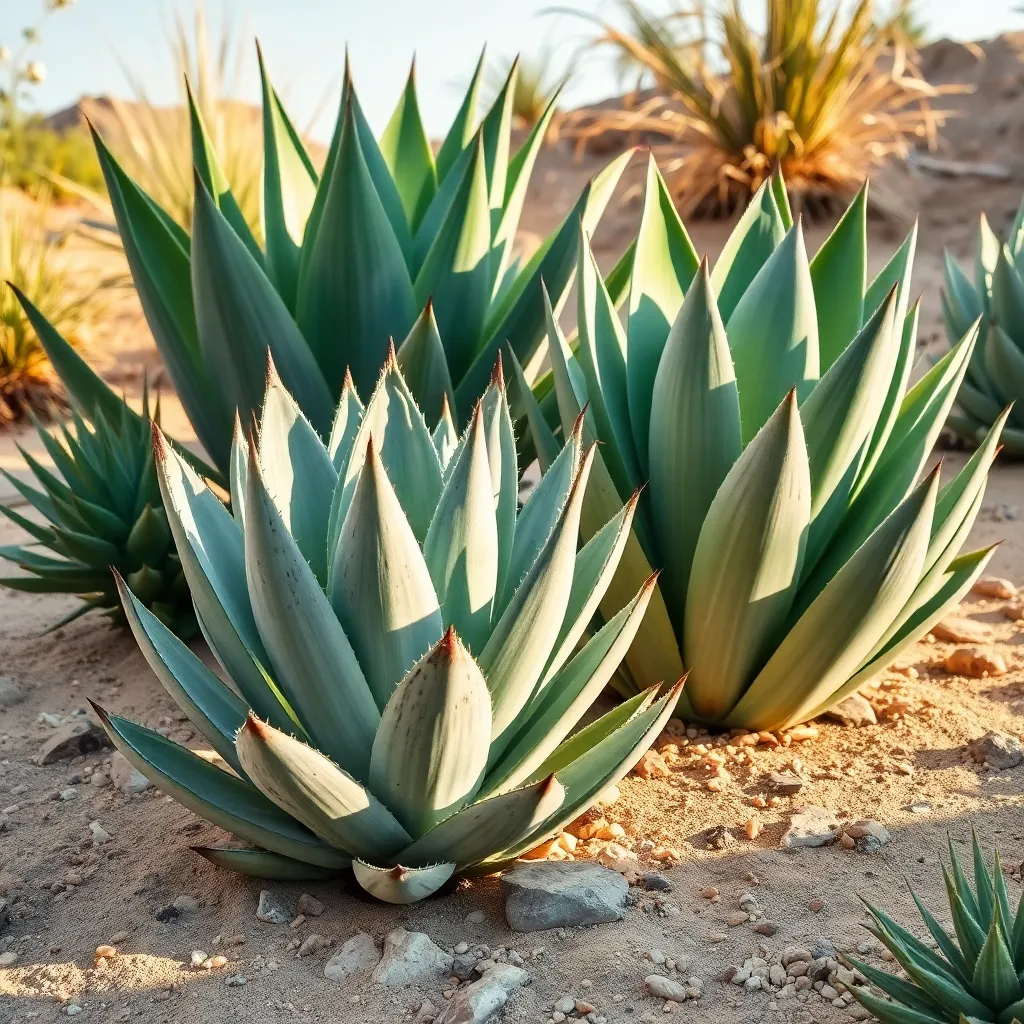
Agave plants are renowned for their dramatic rosette shapes and striking architectural presence. These desert dwellers thrive in well-draining soil, making them perfect for rock gardens or container setups that mimic their natural habitat.
For those in colder climates, growing agave indoors is an excellent option. Position them in a sunny window where they can soak up at least six hours of direct sunlight daily to maintain their robust growth.
Watering agave is straightforward; let the soil dry out completely between waterings to prevent root rot. During the growing season, water them every two to three weeks, but reduce this frequency during winter months when their growth slows down.
To encourage healthy growth, use a cactus or succulent potting mix that provides excellent drainage. Advanced gardeners may also add a layer of gravel or sand at the bottom of the pot for extra drainage efficiency.
Lithops: Living Stones Appeal

Lithops, often called “living stones,” are remarkable succulents that mimic the appearance of small stones or pebbles. These unique plants are a perfect addition to any indoor garden, especially for those with limited space.
To successfully grow Lithops, it’s essential to replicate their natural environment. They thrive in gritty, well-draining soil—consider a mix of cactus potting soil with added sand or perlite for best results.
Watering Lithops requires patience and precision as they have a specific growth cycle. Water them sparingly, only during their active growth phase in late spring and early fall, ensuring that the soil dries out completely between waterings.
Providing the right amount of light is crucial for Lithops’ health. These sun-loving plants need bright, indirect light, so placing them near a south-facing window or under grow lights can help them flourish.
Kalanchoe: Vibrant Bloomers
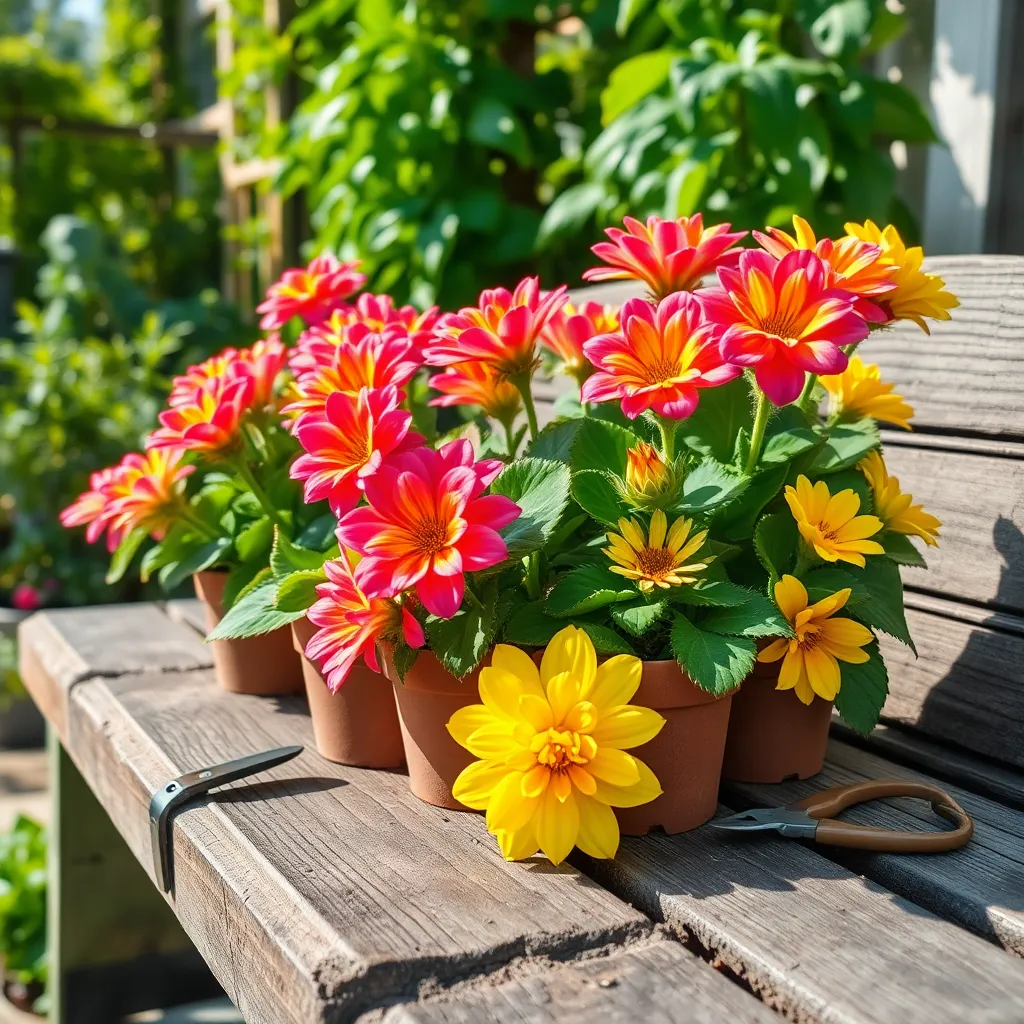
Kalanchoe, known for its vibrant blooms, is a delightful addition to any home garden. These succulents are particularly appreciated for their bright, long-lasting flowers that come in a variety of colors, including reds, pinks, yellows, and oranges.
To successfully cultivate Kalanchoe, provide them with a well-draining potting mix, ideally a cactus or succulent-specific soil. Avoid overwatering, as these plants prefer to dry out between waterings; a schedule of once every two weeks is often sufficient.
Place your Kalanchoe in a spot that receives plenty of bright, indirect sunlight to encourage blooming. While tolerant of low light, optimal lighting conditions will ensure the most vigorous growth and the brightest flowers.
For those looking to enhance their gardening skills, consider deadheading spent blooms to encourage new flower production. Fertilize your plants with a balanced, water-soluble fertilizer every few months during the growing season to support their vibrant displays.
Pachyphytum: Chubby Leafed Wonders
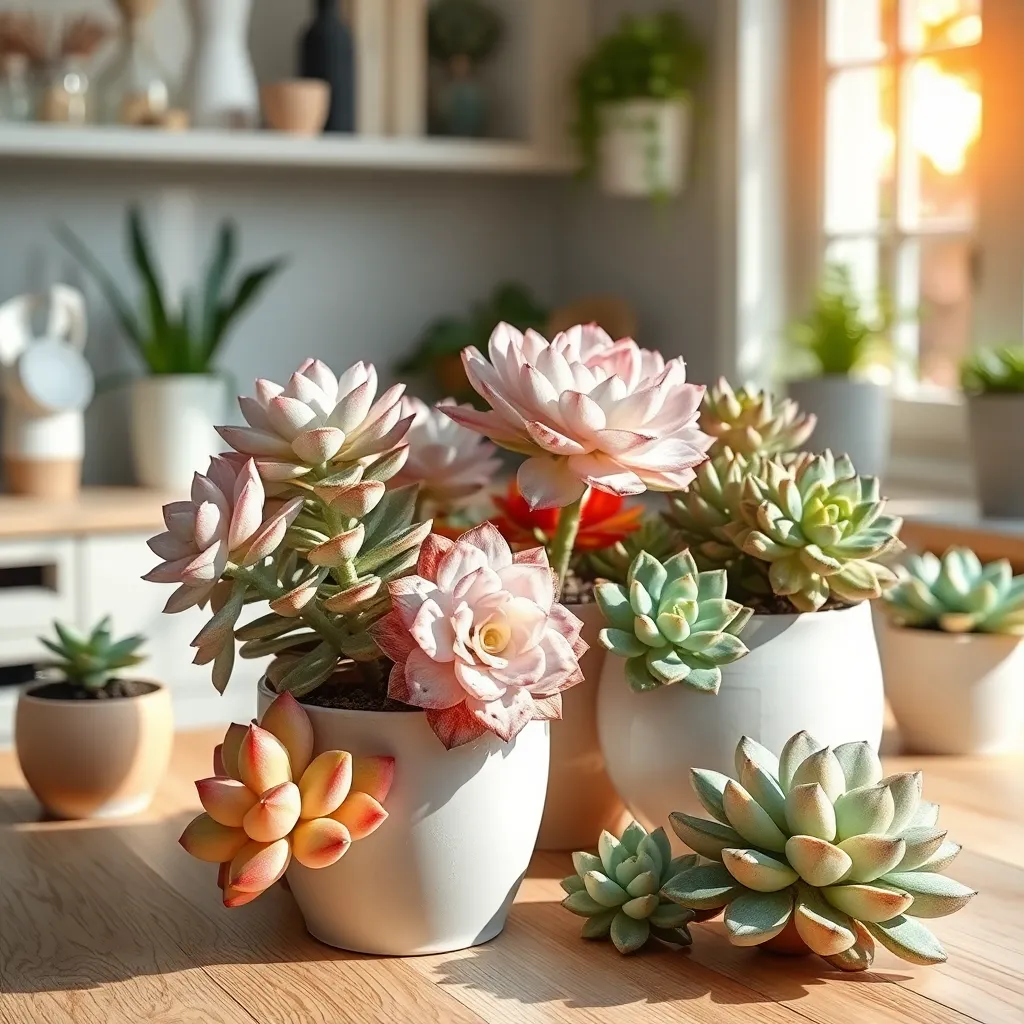
Pachyphytum, known for their plump, fleshy leaves, are a delightful addition to any succulent collection. These charming plants thrive in bright, indirect sunlight and prefer a well-draining soil mix, such as a cactus potting mix combined with perlite.
Watering is a crucial aspect of Pachyphytum care, as these succulents are prone to root rot. It’s best to water them deeply but infrequently, allowing the soil to dry out completely between waterings. A good rule of thumb is to water every two to three weeks, adjusting based on your home’s humidity levels and the season.
For gardeners looking to propagate Pachyphytum, leaf cuttings offer a simple and rewarding method. Gently twist a healthy leaf from the stem and let it callous over for a few days before placing it on top of moist soil. With patience and the right conditions, new roots and leaves will start to form, bringing new life to your collection.
Advanced care involves understanding the subtle signs of stress these plants may exhibit. If the leaves begin to shrivel, it could indicate a need for more frequent watering. Conversely, if the leaves become soft or translucent, reduce watering immediately to prevent rot. Regular inspection and adaptation to the plant’s needs will ensure your Pachyphytum remains a chubby-leafed wonder for years to come.
Caring for Your Succulent Collection
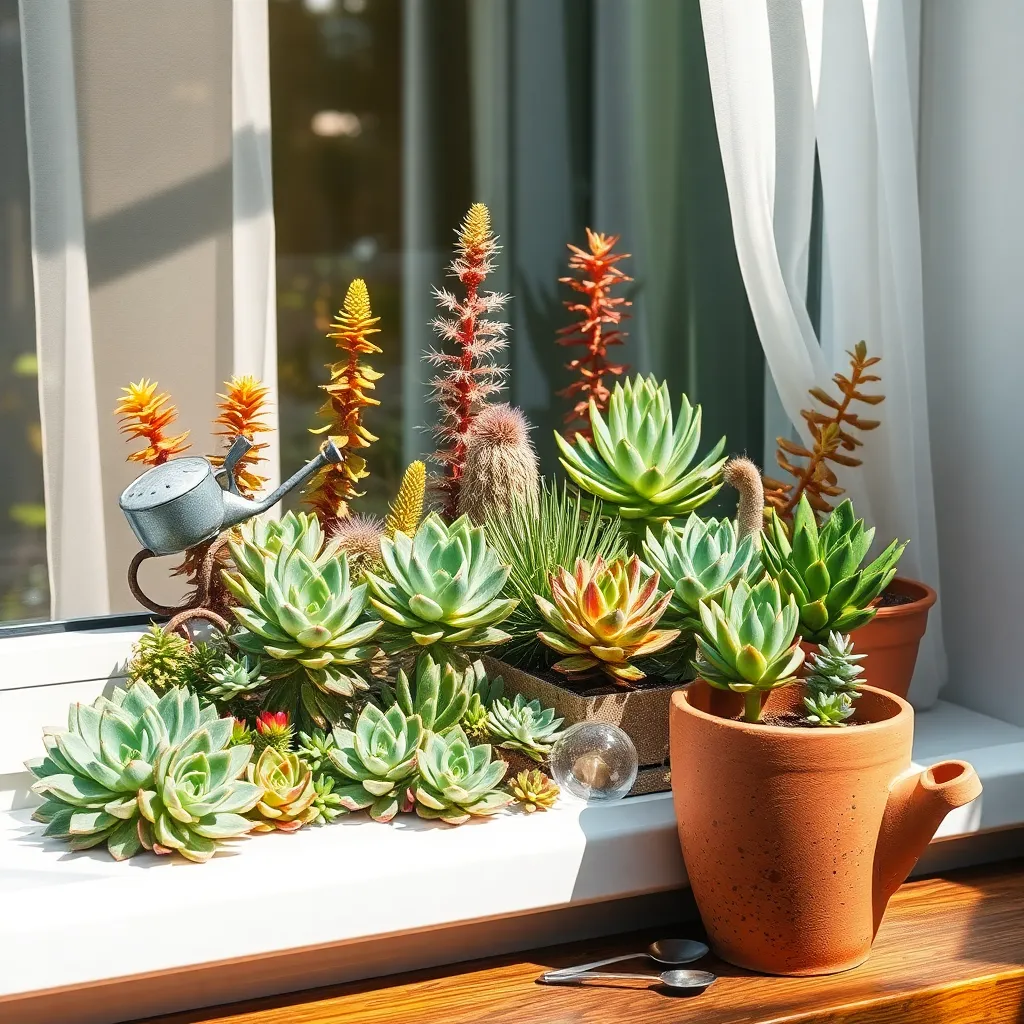
Succulents thrive in well-draining soil, so it’s essential to use a potting mix specifically designed for them. Consider blending a regular potting soil with sand or perlite to enhance drainage, ensuring your plants don’t sit in water.
Watering succulents requires a careful balance; they prefer to dry out between waterings. An effective approach is the “soak and dry” method, where you water thoroughly and then wait until the soil is completely dry before watering again.
Light is crucial for succulents, and most varieties prefer bright, indirect sunlight. However, direct sunlight can scorch their leaves, so if you’re growing them indoors, place them near a window that gets filtered light.
For those looking to expand their collection, propagating succulents can be a rewarding activity. Simply take a leaf cutting, let it callous over for a few days, and then place it on top of the soil to root.
During the growing season, which is typically spring and summer, succulents benefit from monthly fertilization. Use a balanced, water-soluble fertilizer at half strength to encourage healthy growth.
Advanced gardeners might experiment with adding decorative top dressings, such as pebbles, to their succulent arrangements. These not only enhance aesthetic appeal but also help retain moisture and keep pests away.
Conclusion: Growing Success with These Plants
As we wrap up our exploration of the ’12 Beautiful Succulent Varieties to Grow at Home,’ it’s clear that each succulent serves as a metaphor for the diverse aspects of successful relationships. From the steadfast resilience of the Aloe Vera to the supportive nature of the Jade Plant, these varieties remind us of the importance of nurturing, patience, flexibility, and growth in our connections. Each succulent’s unique characteristics parallel key elements like trust, communication, commitment, and understanding—pillars that fortify any relationship.
Now that you’ve discovered these relationship insights, why not choose one succulent to symbolize an area you wish to cultivate in your own bond? Let it serve as a daily reminder of the beauty and effort required to sustain meaningful connections.
I encourage you to save or bookmark this article as a handy guide, not only to inspire your green thumb but also to remind you of these valuable relationship dynamics. With mindful attention and the right environment, just like these succulents, your relationships can thrive and flourish. Here’s to nurturing beautiful connections that stand the test of time. 🌱❤️

